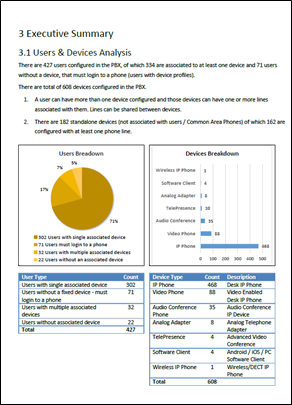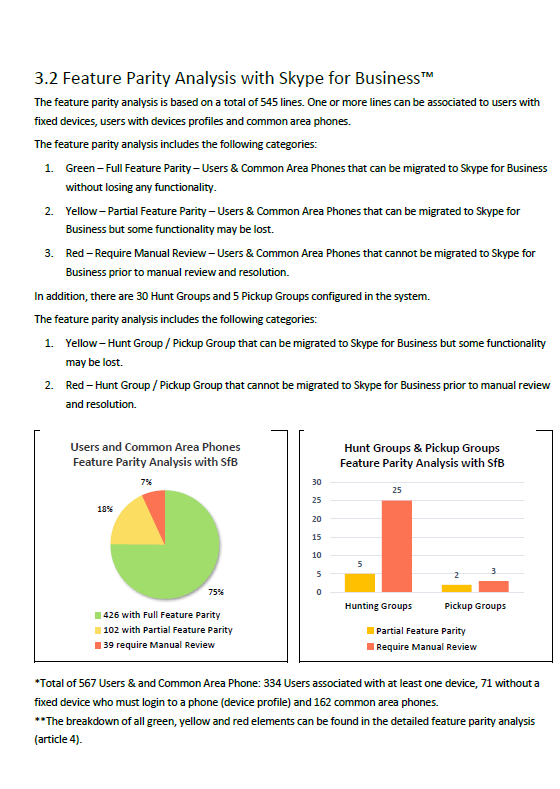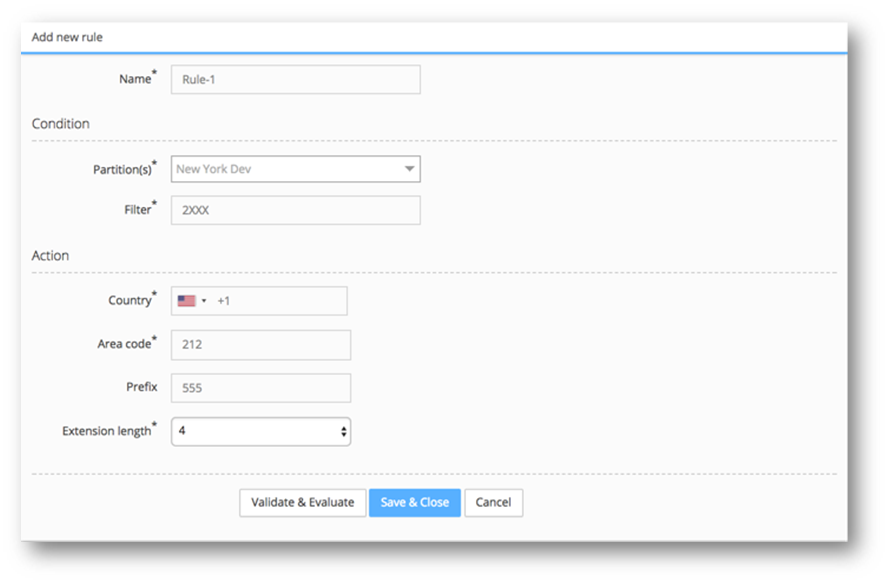Part 2: Planning a Migration from Avaya to Microsoft Skype for Business or Teams
I recently published a blog about planning a migration from an Avaya PBX to Microsoft Skype for Business on-premises and/or in Office 365. In that blog, I referenced several newly certified and very feature rich migration tools now available to streamline migrations from a variety of legacy IP-PBX environments to Microsoft Skype for Business (or Teams). One of these two tools is Univonix Migrate that I am highlighting in this blog because it is now such a great option to consider when planning and implementing your migration.
Additional links in this blog series include:
- Part 1: Planning a Migration from Avaya to Microsoft Skype for Business or Teams
- Part 2: Planning a Migration from Avaya to Microsoft Skype for Business or Teams (this blog)
- Part 3: Planning a Migration from Avaya to Microsoft Skype for Business or Teams
Univonix Migrate is certified under a new classification of Microsoft IT Pro Tools for migrations. This tool was announced at Microsoft Ignite 2017 as part of this presentation. The application enables companies who specialize in telecom migrations (system integrators) to perform a detailed discovery of an IP-PBX environment, provide verbose reporting, identify feature gaps, schedule the migrations, and then implement all the necessary changes on all source IP-PBXs and the target Skype for Business Server, Hybrid or Online environment. Migration tools such as this enable system integrators to answer most migration questions, more accurately scope engagements, increase the speed of migrations, reduce the complexity, reduce resources, and ultimately save costs. When working with customers to plan PBX migrations, system integrators often need to include project resources who are experts on the legacy IP-PBX systems (Avaya, Cisco, Nortel, etc.) and the target system (Skype for Business Server, Hybrid, and Online). Integrators also need to ask a lot of questions to the customer about configurations of a legacy IP-PBX system, to which the customer typically has had installed for years and often does not have a dedicated telecom resource. A migration tool such as this minimizes the need for expertise in the legacy IP-PBX system and provides a deep configuration analysis.
Univonix Migrate is classified as Software as a Service (SaaS) running on Microsoft Azure, offering enterprise grade security and compliance. In other words, this is a cloud based solution that minimizes on-premises server infrastructure needed to support it. Univonix enables a migration to Microsoft Skype for Business on-premises, hybrid, and in the Office 365 cloud. The legacy IP-PBX systems it supports includes Cisco and Avaya, with Mitel, Siemens/Unify, Nortel, Alcatel-Lucent, NEC, ShoreTel, and others planned in the near future. Univonix Migrate supports migrations to Skype for Business and is planning to support migrations to Microsoft Teams in the future. For a list of the latest IP-PBX systems supported by Univonix Migrate, please review their product site here.
A project using Univonix Migrate follows the prescribed methodology listed below:
- Extraction - In this first step, the Univonix Migrate will provide tools to export all of the legacy IP-PBX users and system level configuration. Additionally, Univonix Migrate will export Microsoft Skype for Business users and Active Directory information.
- Discover - The system will automatically map the legacy IP-PBX users, devices and system level features being used to Skype for Business. It will also automatically match the users in the legacy system to Active Directory users. The discovery phase includes information gathering of names and numbers, call forwarding, multi-lines, shared lines, boss/admin, speed dials, hunt groups, pickup groups, call parks and more.
- Enrich - Although the automated feature and user mapping capabilities will match a majority of the data from the source and target migration environments, there will always be some data that cannot be matched. It is during this step that an organization will need to assist in the data mapping process. Before beginning any migration, it is a best practice to have a clean dataset to start from. Univonix Migrate's online portal includes an intuitive UI to resolve conflicts, check dependencies, normalize numbers to E.164, bulk assignment of policies and more.
- Verify - After all data matching is completed (both automatic and manual matching), the information is presented to the customer for approval. It is also during this phase that users are placed into groups for phased migrations. Users are typically grouped by teams, site, floor, etc. to minimize the potential for disruptions.
- Finalize - During this phase the migration from the legacy IP-PBX(s) is implemented. Univonix Migrate loads thousands of users, with all of their telephony settings, configures voicemail settings, resource groups, call orbits to Skype for Business – in a matter of hours. In addition, Univonix Migrate will configure the legacy IP-PBX to route the calls for all migrated users to Skype for Business, and email the user of the change using a customizable template. The migration groups can be scheduled to ease the administration of the migration tasks. Because the actions involved with a migration are implemented by Univonix Migrate there is often no need to send technical people onsite that saves time, travel costs, coordination of the site, etc.
Reporting is a key element of any migration project - large or small - PBX or something else. The migration team must understand everything about the current environment, the capabilities of a new environment, have a gap analysis, and be able to produce an executive report as well as detailed reports. Univonix Migrate will provide detailed reporting of the existing environment as part of its Extraction process. This is extremely useful because in many migrations, the organization does not have a dedicated telecom administrator with in-depth knowledge of the legacy IP-PBX configuration. The data displayed in this report will prompt many questions about why certain settings have been defined. Univonix Migrate will also provide a detailed gap analysis report during its discovery phase. This enables the migration team to identify any loss in functionality or potential misconfigurations. I use the term "loss in functionality" loosely because it may not be a feature that is missing, but rather the terminology of features may have changed from a 15-year-old legacy IP-PBX attempting to be mapped to a Skype for Business environment. Either way, this gap analysis will identify and allow the migration team to make the proper adjustments during their planning. Other important reports generated by Univonix Migrate are executive summaries and migration status reports. Automated status reports are a dream for any project manager to have automatically generated daily for delivery.
In addition to providing the migration capabilities, Univonix Migrate offers a Return on Investment (ROI) calculator at www.univonix.com/ROI. By answering a few key questions about your current PBX environment, how many sites, etc. a cost savings analysis and reduction in deployment time is provided. A ROI calculation breakdown is also provided.
Below are several example screen captures to highlight some of the migration capabilities of Univonix Migrate:
- Below is an example of the executive summary report provided by the migration software. The report continues with a detailed feature parity analysis, to enable stake holders who are not telephony experts to understand the implications to the organization.


- Below is an example of the migration dashboard showing overall status that can be used each day for project reporting.

- When deploying features and settings to thousands of users, the ability is needed to define and implement policies to large groups. Below is an example of how this is done.

- Below is an example of an E.164 Normalization Rule being defined in preparation for migration.

- This is an example of IP PBX Hunt Group being mapped to a Skype for Business Resource Group.

By highlighting a few of the features available in this product, my hope is that you will consider using one of these new migration tools in your project planning.
Univonix Migrate is only available through their partners and system integrators; not directly to customers. The software and the migration journey from one (or more) PBX environments to Skype for Business can be complex. For a communications system vital to the success of most organizations, unless you have internal talent very familiar with both environments you will want an experienced partner to work with to ensure a smooth migration. Univonix can be contacted on their website or email at sales@univonix.com for more information and a demonstration of the software.
For Microsoft Partners who would like more information about this product, please contact Univonix and/or contact the new One Commercial Partner organization in Microsoft.